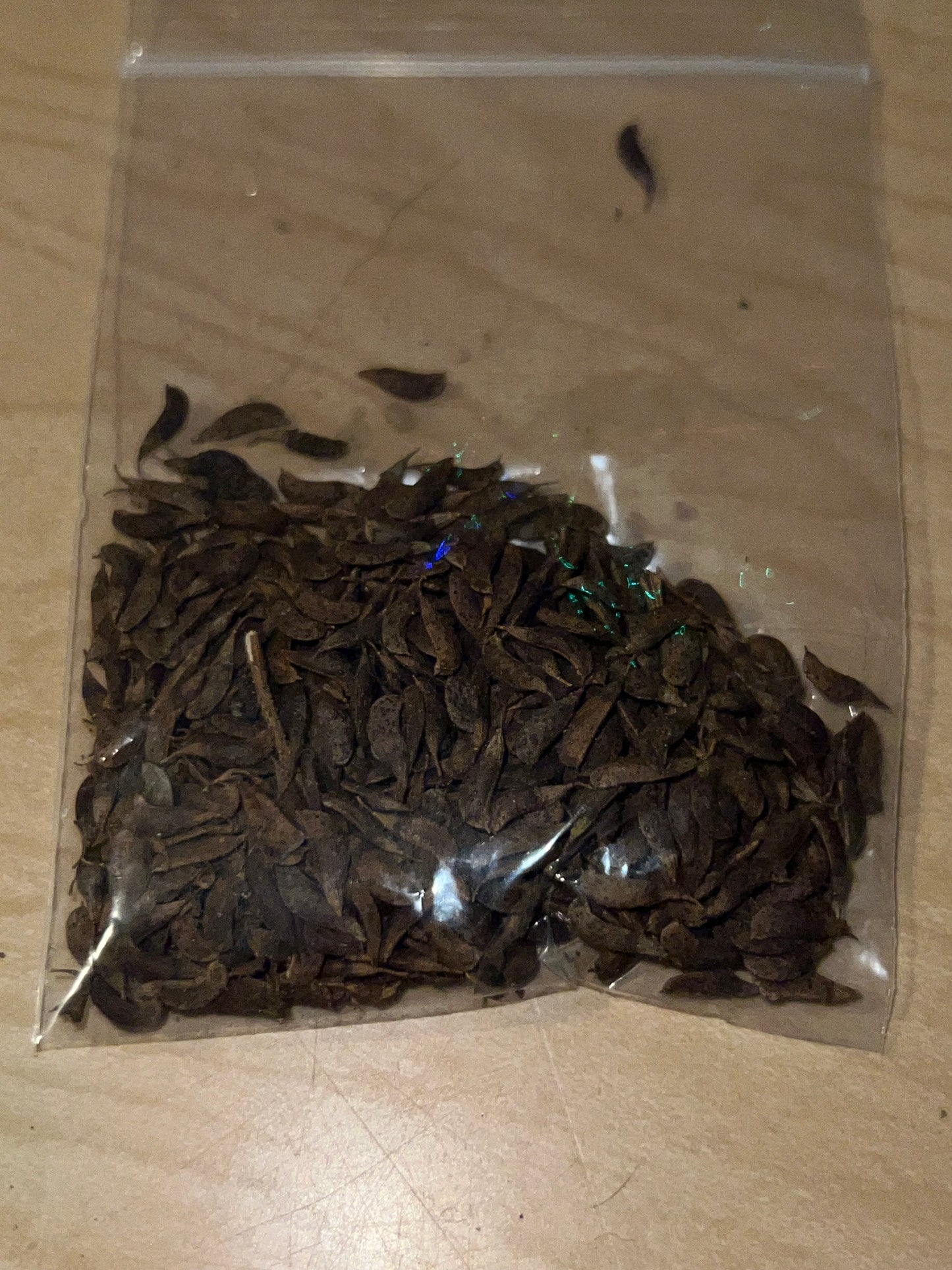Living Soil Tree Farm
False Indigo Bush Seeds
False Indigo Bush Seeds
Couldn't load pickup availability
False Indigo Bush (Amorpha fruticosa)
False indigo bush is a fascinating woody native shrub with a lot to offer, especially if you're looking to add beauty, wildlife value, and soil resilience to your landscape. This species is part of the legume family and forms a symbiotic relationship with rhizobium bacteria to fix nitrogen in the soil. It has a bushy, multi-stemmed growth habit and spreads by root suckers, allowing it to form dense colonies over time. This trait makes it particularly well-suited for erosion control along streambanks, ditches, or disturbed areas. If you'd prefer to keep it more contained, periodic mowing or cutting will keep growth in check.
False indigo bush is a favorite among pollinators. Its flowers, which bloom in late spring to early summer, are rich in nectar and highly attractive to bees, butterflies, and other beneficial insects. The flowers resemble other bean flowers but much smaller. While the plant is not typically considered edible for humans, it provides excellent cover and browse for wildlife. Birds often use it for nesting, and its foliage is browsed by deer. Livestock may also enjoy the leaves.
Like many native shrubs, this one is very low maintenance once established. Generally it prefers soils that are well draining but consistently moist. In the wild it is often found near wetlands. It tolerates both drought (once established) and flooding, making it a great candidate for rain gardens or tough edge zones where few other species thrive. It prefers full sun but can tolerate some shade. In drier soils or hotter climates it will benefit from some shade.
False indigo bush is native to much of the central and eastern United States, and it's especially common in riparian areas and open woodlands. It responds well to pruning and can even be coppiced if desired. While it doesn’t grow as rapidly as black locust, seedlings can still reach several feet in their first growing season under good conditions. This is a fun and rewarding native plant to grow—great for restoration work, wildlife gardens, or just to enjoy the unique look of its vibrant flowers. It can be readily grown from seed although it can also be grown from hardwood cuttings. The cuttings do not root as easily as willow or elderberry.
Although I (Nick) have not tested this thoroughly I suspect that this species could be an excellent companion plant for establishing slower growing trees. More to come on this as we experiment.
We find the best way to germinate the seeds is to soak them in room temperature water for roughly 24 hours prior to sowing. Seeds can de covered in ~1/2 inch of soil or mulch. Keep the soil moist during germination. Sow after danger of frost. These seeds can be stored dry just like most garden seeds.
Each pack comes with a minimum of 50 seeds. We have not conducted formal germination testing on these seeds. The seeds were collected in January 2025.
Materials
Materials
Shipping & Returns
Shipping & Returns
Dimensions
Dimensions
Care Instructions
Care Instructions



